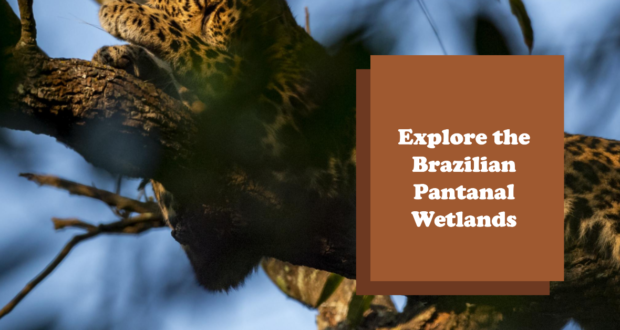If you have been longing to visit the Amazon to view wildlife, you might want to consider an even more interesting and accessible destination. Brazil Pantanal nature excursions are fascinating and even more enlightening than a trip to the Amazon. The reason for this is that the forest is very dense in the Amazon, so it’s hard to get around and hard to see the wildlife that is present. In Brazil Pantanal, you will find open marshes and easier going. This South American wetland measures about 210,000 square miles, which is more than twenty times greater than the area of the Florida Everglades. About half of the Pantanal is located in Brazil. It straddles the boundaries of Paraguay, Bolivia and Brazil.
Most people enter the Brazilian Pantanal from Campo Grande the capital of the Mato Grosso state and gateway to the souther Pantanal. The company Green Toad Bus can help you get to the Pantanal. In the southwestern region of the Pantanal, you will find the Parque Nacional do Pantanal Matogrossense, which occupies about 1350 square miles. The rest of the Pantanal is privately owned but can be explored thanks to cooperation between land owners and ecotourism interests.
There are very few towns and people in the Pantanal, and there is just one main road called the Transpantaneira. This is an elevated dirt road that travels quite far into the Pantanal. Limited four-wheel-drive access is available during certain times of year. Additionally, you can travel about the Pantanal by motorboat or small plane. Often it is possible to arrange your transportation through the lodge where you plan to stay.
Enjoying Brazil Pantanal Nature Excursions Is Possible At Any Time Of Year
Many people believe that the Pantanal is a swamp like the Florida Everglades; however, this is not true. It is actually a very large alluvial plain that was once an inland sea known as Xaraes. About sixty-five million years ago, this sea began drying out. The area is only an average of 150 meters above sea level, so it does flood during the wet season, which runs from November to March. During this time, abundant wildlife tends to gather up on small, temporary islands in order to avoid the flooding.
Understandably, having such a long and dramatic wet season has made farming impossible; however, it has helped encourage a richly varied wildlife population. The soil in the area is very rich, the waters are full of fish and aquatic life and wading birds gather in huge flocks to take advantage of the Brazil Pantanal nature bounty. When the waters recede and dry up, birds of prey and jacares (large black caimans similar to crocodiles) feast on the fish in the diminishing ponds.
It’s easy to see that visiting the Brazil Pantanal would be fascinating at any time of year; however, it is difficult and sometimes dangerous to get around during the rainy season. Additionally, the mosquitoes are quite bad during the rainy season. For bird watching and fishing the drier months are much better. Additionally, if you can visit in the fall you have a good chance of seeing some jaguar, which are the largest of the American cats and the most difficult to find.
If you are going to fish, you will be thrilled with the wide array of interesting, challenging and tasty fish you can catch. The most popular catch in the Brazil Pantanal is known as the river tiger or dourado. You may also fish for pintado, pacu, pirancajuva, suribim, cachara, bagre, piapara, giripoca or piraputanga. Limited hunting is also available. For either fishing or hunting, be sure to see local officials for proper permits.
For sheer enjoyment of the great outdoors coupled with the opportunity to observe and interact with an abundance of wildlife, Brazil Pantanal nature excursions offer an attractive, convenient and affordable adventure. Check out the Pantanal trips offered by the Green Toad here.
 Living There
Living There



